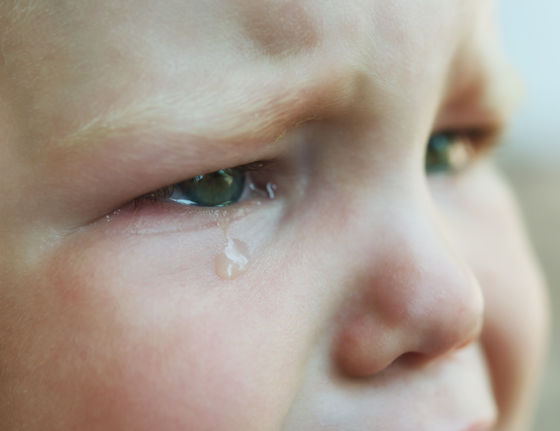There are three types of tears: when you're sad, when an onion stains your eyes, and what's the other one?

People often shed tears, such as when they are grieving a breakup with a lover or when chopping onions, but since tears are transparent, they all seem to be the same. Live Science, a science news site, has compiled information about tears that are familiar but little known, such as that there are three types of tears with different components and that there are three layers that cover the surface of the eye. Ta.
What are tears made of? | Live Science
According to Daniela Ohling, who teaches optometry at the University of Plymouth in the UK, there are three types of tears: ``basic tears,'' ``reflex tears,'' and ``emotional lacrimation.'' Of these, ``emotional lachrymal fluid'' is probably the type of tear that is most easily recognized as tears, and is the type of tear that is shed due to large emotional changes. In addition to this, the ``basal lachrymal fluid'' acts as a buffer to protect the eyes, removing dirt from the eyes and replenishing nutrients, and the ``reflex'' produced in response to stimuli such as smoke or onions. lachrymal fluid is secreted from the eyes.
The composition of tears differs depending on the type, and the basic tear fluid contains many electrolytes such as sodium ions and proteins with antibacterial properties. Specifically, lipocalin, a protein that binds to specific compounds that make up microorganisms and kills them, and lysozyme , an enzyme that destroys bacterial cell walls, protect the eyes from infections.
Reflex tears and emotional lacrimation, on the other hand, have a higher water content and lower fat and protein concentrations. Some scientists also report that emotional lachrymal fluid contains higher concentrations of hormones secreted during times of stress than reflex tear fluid.

Tears form a thin film that covers the cornea, the surface of the eye, and supplies nutrients to the eye. This tear film has three layers. The outermost layer is a layer of oil secreted by
The middle layer is watery tears produced by the lachrymal glands and has the function of moisturizing the eye and supplying protein, oxygen, and electrolytes. The inner layer, closest to the cornea, contains mucus proteins called mucins, which help the tear film coat the surface of the eye.
According to Oring, humans secrete an average of about 1 to 4 microliters of tears per minute, or about 1.44 to 5.76 milliliters per day. Most of this is basic tear fluid, but the amount of tear production varies greatly depending on what you do.
'For example, when you ride a bicycle, you are exposed to a lot of air, which increases the rate of tear evaporation and increases the amount of tears. Conversely, if you enter a steam room with high humidity, there is no need to increase the amount of water, so the amount of tear secretion decreases. It’s going to decrease,” Ohling said.

In this way, the amount of tears is regulated as needed, and excess tears are drained from the eye through the tear ducts. However, emotional and reflex tears are often released all at once, causing them to overflow from the eyes before normal drainage can occur. This is why tears fall when you're sad or when your eyes hurt from smoke.
On the other hand, insufficient tear secretion results in dry eye. Dry eye can be caused by a variety of factors, including smoking, nutritional deficiencies, staring at a computer screen for long periods of time, and decreased blinking, but it is also more likely to develop due to a decline in lacrimal gland function with age. Become.
Additionally, some people suffer from a condition called Sjögren's syndrome , which causes an inability to produce tears. This is an autoimmune disease in which the body's immune cells damage the lacrimal and salivary glands, and the main symptoms are dry eyes and dry mouth.
``People with Sjögren's syndrome don't shed tears reflexively, so even if something like an eyelash gets in their eye, they won't be able to produce enough tears,'' Ohling said.
Related Posts:
in Science, Posted by log1l_ks







